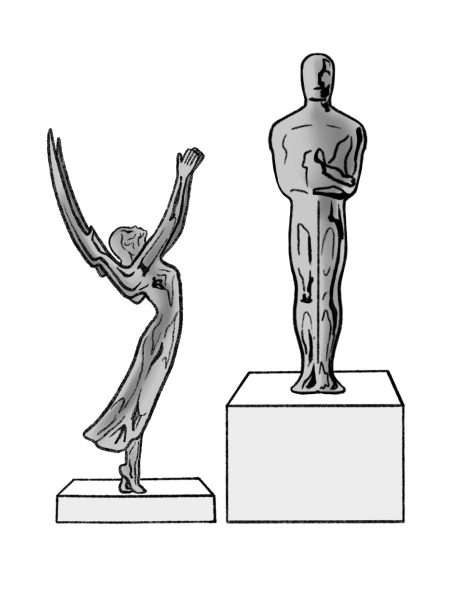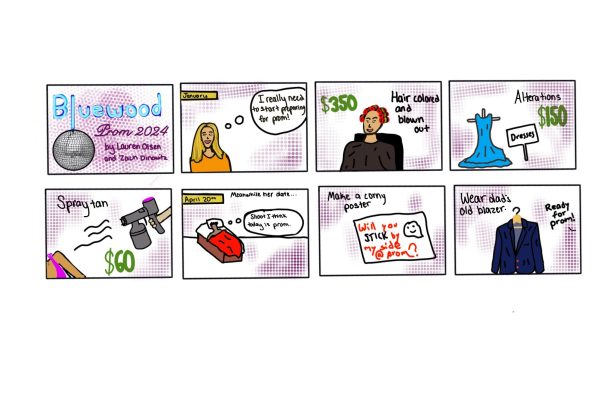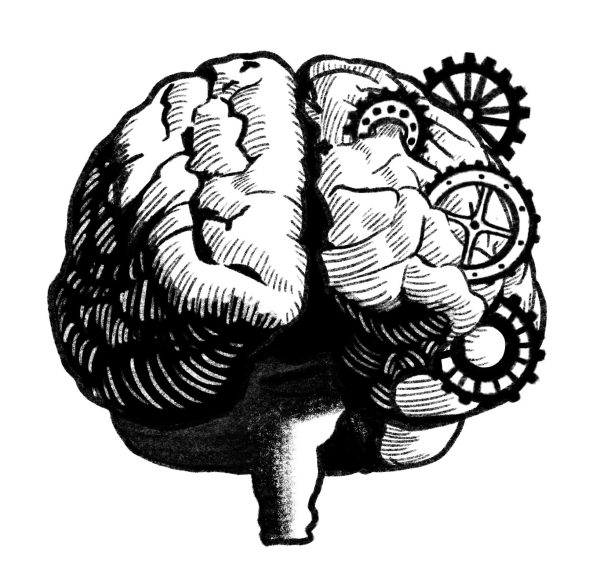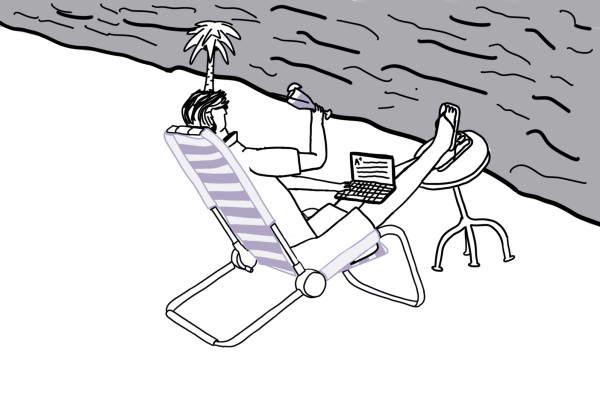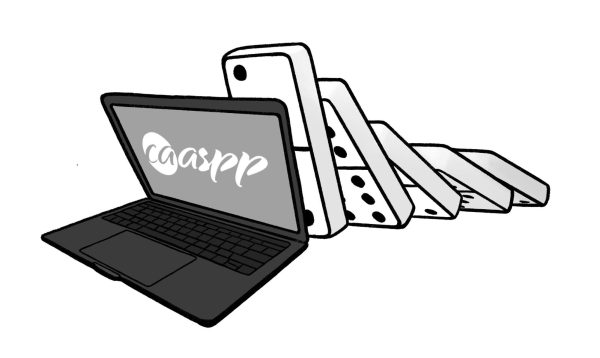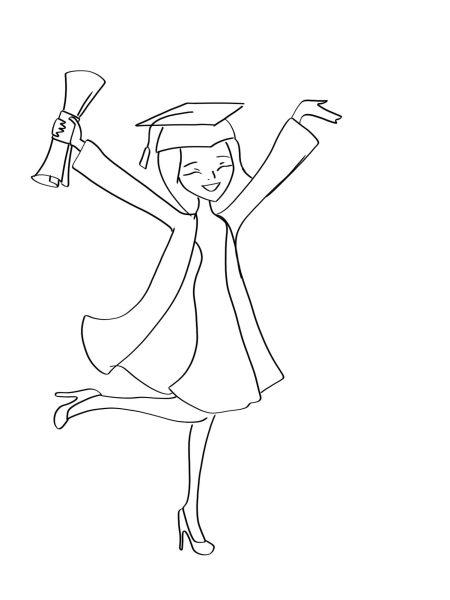The polarity of politics: how a divided nation affects us all
February 11, 2020
Every Sunday morning, my phone rings with a call from Pennsylvania. My grandmother’s chipper voice greets me, excited to hear about my week. She tells me about her tennis matches and my grandfather’s frustrating snoring habits. She asks about my grades and extracurriculars. We catch up for nearly an hour before some other obligation leads to the end of the call. However, despite my love for her, I was embarrassed to admit to my friends that she voted for Donald Trump in 2016 and will likely write his name on her 2020 ballot.
My grandmother is not racist, she is not homophobic and she is not xenophobic. She is from a small mining town in Northeastern Pennsylvania and felt that Trump was the only candidate in 2016 able to represent her community and others like her. Her intentions in voting for Trump were genuine and whether or not my political opinions align with hers is beside the point. The issue was that I was so concerned that revealing her voting choices would result in some sort of backlash that I did not feel comfortable telling my peers that my grandmother voted for the winning presidential candidate.
Living in politically homogeneous Marin, where 79 percent of the population voted for Hillary Clinton and only 16 percent voted for Trump in the 2016 election, it’s easy to believe that your political beliefs are only valid if you fall to the left, as most of your neighbors and classmates will likely feel the same. When a majority of the population in a specific area thinks similarly about most issues, a difference of opinion can almost guarantee retaliation. However, this isn’t limited to the left. The same could be said about Roberts County, Texas, the highest Trump supporting county in America, where 95 percent of the population voted for Trump in the 2016 election. In a politically uniform community, questions about gun control, climate change, healthcare, the president and other heavily debated topics are only recognized and accepted if they are on one side. I am not a staunch conservative, unlike some of my family members, yet even as a moderate, I have felt attacked for expressing my beliefs and, as aforementioned, the beliefs of my family members. The gray area appears to be fading as every issue is marked with two distinct approaches––Republican or Democratic.
According to Pew Research, polarization in the past two decades between the median Democrat and Republican has increased from 10 percent to 21 percent. This has left the moderate viewpoint more barren than at any other point in history besides the Civil War according to the Wall Street Journal. Moreover, 27 percent of Democrats see Republicans as a threat to the national well-being and 36 percent of Republicans hold the same belief about their counterparts. 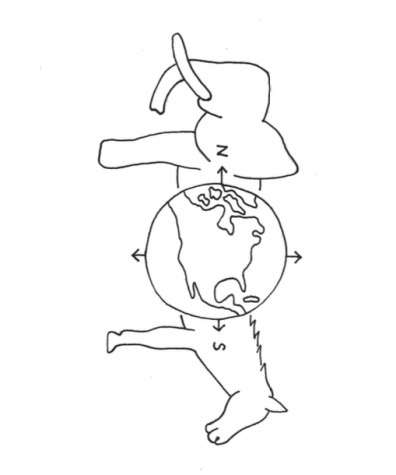
The lead up to this increasing political divide can mostly be explained by the economic crisis of 2008, according to the Wall Street Journal. Approaches to the stock market crash varied greatly on either side of the political spectrum. While liberals concluded a larger government recovery program was necessary, conservatives believed the opposite, causing a fatal divide in ideology. The crash, in combination with issues such as undocumented immigration, terrorism and healthcare, all contributed to the disconnect apparent today.
This animosity rings especially true in our school. Redwood High School, as most of the student body knows, has a large majority of left-leaning students. Although a mostly liberal populace would suggest that conservative students serve as the sole targets for aggression, students from all points on the political spectrum face onslaught from their peers for voicing their opinions in class. According to a survey conducted by Bark in Jan. of 2020, 57 percent of students have felt attacked for expressing their political beliefs. This shockingly high percentage clearly illustrates just how prevalent the issue is.
During May of last year, posters labeled “Hate has no home here” lined the hallways of Redwood. The message itself is hateful, and, while it is excluding “hate,” it points to an irony fundamental to most political issues. The “hate” the posters referred to was a video posted by a Redwood student in which a political mockery, according to the Youtuber herself, was misinterpreted. The student ended up leaving Redwood after being verbally attacked both at school and online by strangers, peers, parents and others.
In this case, the word “hate” reveals an underlying message that “hate” has become synonymous with that particular Redwood student and conservative students more broadly, demonstrating that our initial reactions are not to listen but rather to accuse. A particularly devisive issue such as abortion affirms this point. What one might perceive as wrong, such as not allowing women the right to choose what to do with their own bodies, others might see as necessary and preventing murder. Both sides have valid opinions. Both sides can be backed by reasoning. Both sides have the right to be acknowledged.
Despite recent increases in polarity, it is important to address the fact that polarity has been a part of this country since its inception. From the time our founding fathers signed the Declaration of Independence, the United States has fought and split over a wide variety of issues, from how to appropriately write the Constitution to whether or not slavery should be legal to voting rights. In a 2018 article, the New York Times even argued that the majority of Americans do not side with either political extreme. Despite this, according to the New York Times, a political extreme remains as only one percent of “progressive activists” support the president in contrast to an overwhelming 97 percent of “devoted conservatives” who support Trump.
Until both sides have the capacity to listen to one another and not assume that the other side is coming from a vile place, the political divide will only grow. Today, many from both sides only listen with the intention to try to refute. Listening with an open heart and open mind is the only way we can begin to understand one another. We must believe that it is everyone’s objective to do what is best for the country. Both sides desire peace and prosperity, regardless of their ideas of how to get there.











